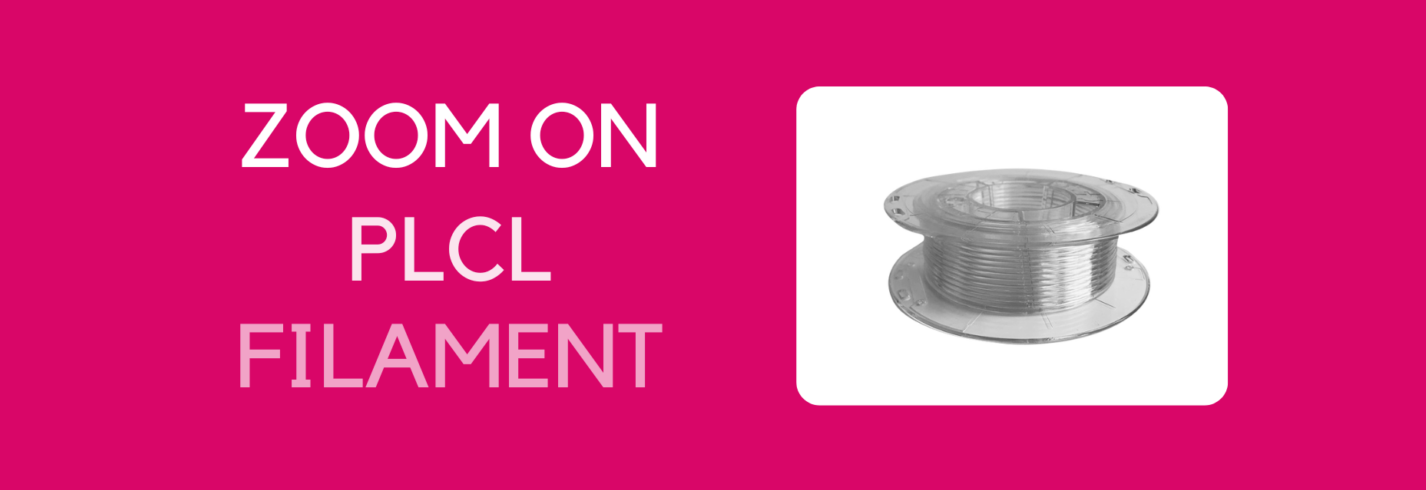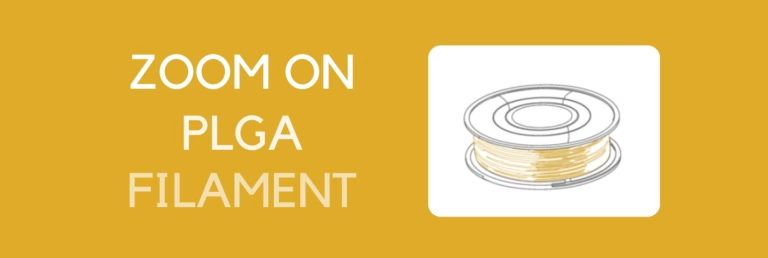PLA/PCL 70:30, also known as POLY-CAPROLACTISSE 70/30, is a poly(lactide-co-caprolactone) copolymer (known as PLCL at Lattice Services). This material is particularly appreciated for its flexibility and controlled degradability, making it an excellent choice for applications requiring both flexibility and moderate mechanical strength.
Biocompatible and bioresorbable, this filament is used notably in the manufacture of implantable mesh and nerve reconstruction guides. Its ability to degrade gradually facilitates the integration and regeneration of surrounding biological tissues.
What is a resorbable implantable filament?
An implantable, resorbable filament is a polymer specially designed to be introduced into the human body, then degraded over time. This property eliminates the need for a second surgical procedure to remove the device.
The material degrades by hydrolysis or by the action of enzymes present in the body, producing by-products that are eliminated naturally. These polymers are essential in the manufacture of temporary medical devices used in orthopedic and dental surgery, or in tissue engineering, where they provide temporary mechanical support before being replaced by regenerated tissue.
What is the PLCL?
PLA/PCL 70:30 (POLY-CAPROLACTISSE 70/30) is a medical-grade copolymer composed of 70% lactic acid (PLA) and 30% caprolactone (PCL). It is characterized by lower stiffness than PLGA and slower degradation than PDO.
The polymer is semi-transparent with a slight white tint. Its flexibility is linked to a glass transition temperature close to room temperature. In addition, its semi-crystalline structure gives it good mechanical strength while remaining flexible.
PLCL technical specifications :
- Nature: Poly(lactide-co-caprolactone) copolymer (PLCL)
- Composition: 70% lactic acid (PLA), 30% caprolactone (PCL)
- Color: Transparent
- Appearance: Soft and flexible
- Filament diameter: 1.75 mm – 2.85 mm
- Available weights: 100g – 200g
- Origin: Made in France
- Main properties: Bioresorbable, biocompatible, soft, flexible, implantable
Its resorption time of between 12 and 24 months makes it ideally suited to applications requiring temporary tissue support before full regeneration.
PLCL 70:30 applications
POLY-CAPROLACTISSE 70/30 filament is mainly used in medical applications where flexibility and resorbability are essential.
1. Implantable meshes
Textile mesh made from PLA/PCL is used to reinforce soft tissue in abdominal, pelvic and thoracic surgery. Their flexibility ensures optimum adaptation to the patient’s morphology, while their gradual degradation facilitates regeneration of the surrounding tissue.
2. Nerve reconstruction guides
PLA/PCL 70:30 is also used to manufacture guides for nerve reconstruction. These guides provide temporary support for the regeneration of damaged nerves. Its controlled degradation guarantees sufficient support during the natural regeneration phase.
Advantages and disadvantages of PLCL
Benefits
- Bioresorbable: Allows gradual degradation, avoiding the need for further surgery.
- Highly flexible: Suitable for applications requiring a flexible material.
- Controlled degradation (12-24 months): Ensures sufficient temporary support before replacement by biological tissue.
- Biocompatible: Limits the risk of inflammation thanks to good tolerance by the body.
- Easy to 3D print: Compatible with most additive manufacturing processes.
Disadvantages
- Sensitivity to storage conditions: Requires appropriate storage to avoid premature degradation.
- Delicate printing: Printing speed must be slowed down, and lack of shrinkage may complicate manufacture, especially for flexible material.
Would you like to find out more about PLCL filament or discover our other bioresorbable materials?
Visit our complete product page.







